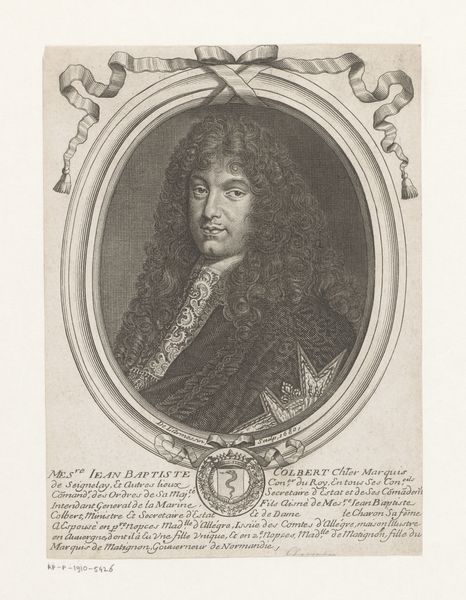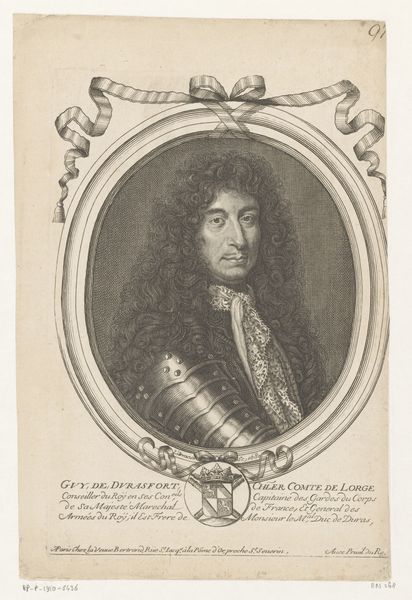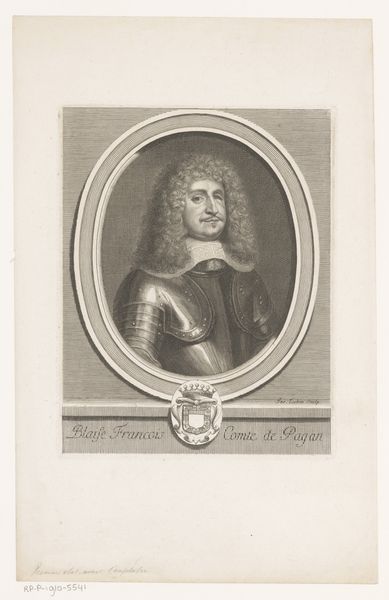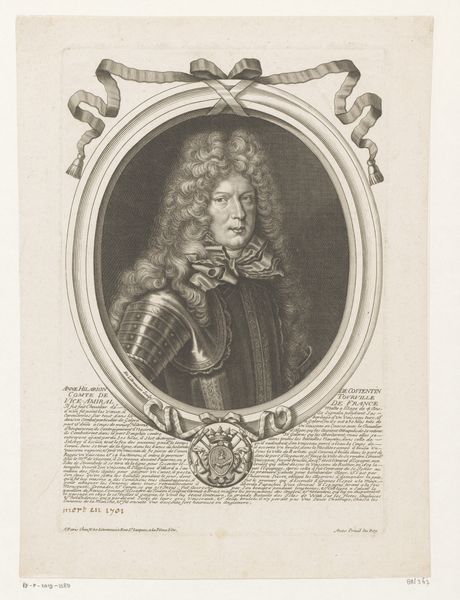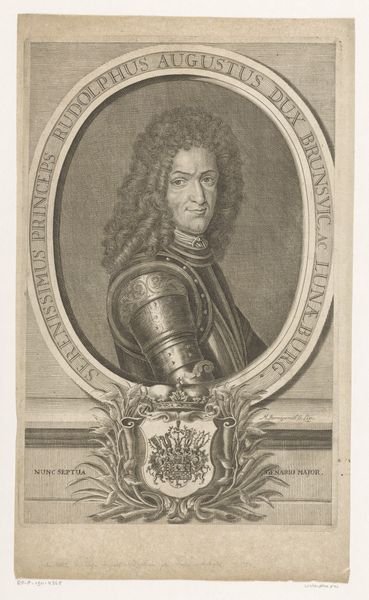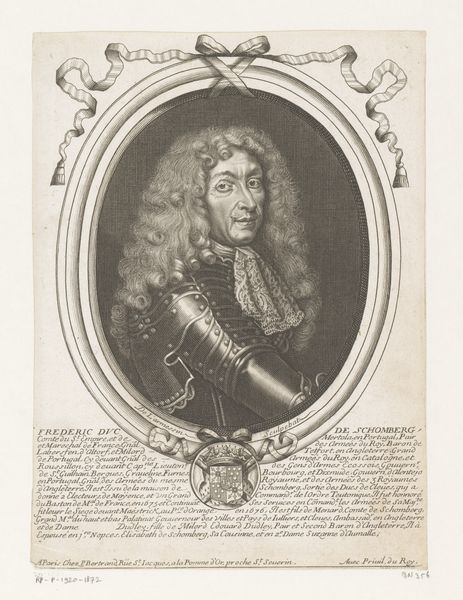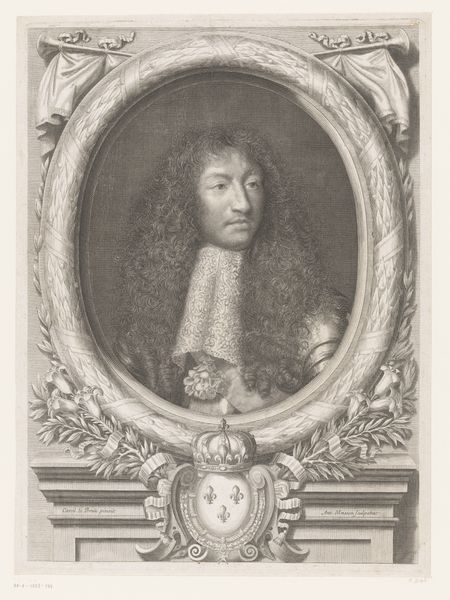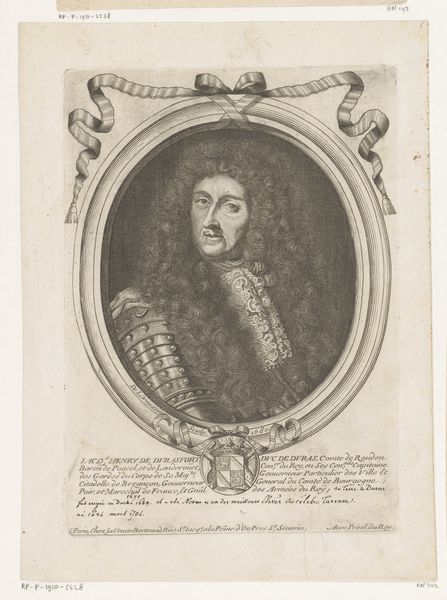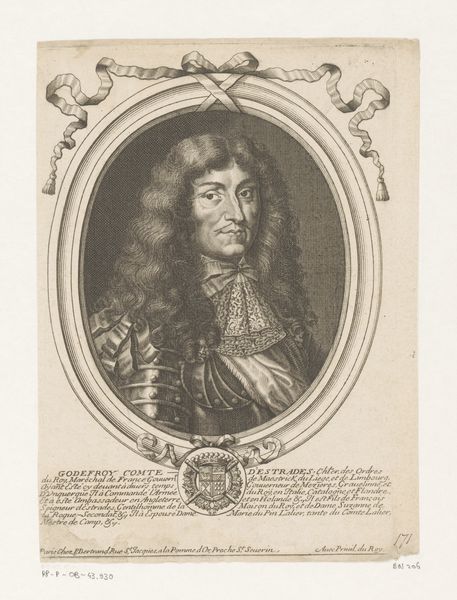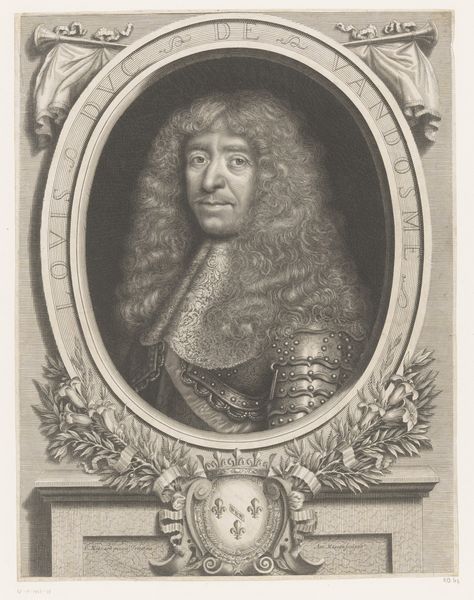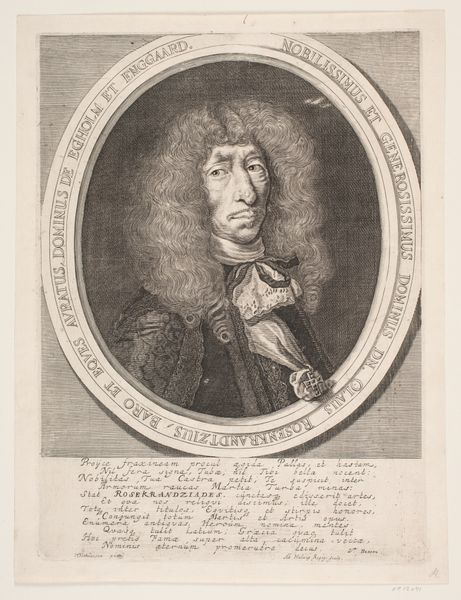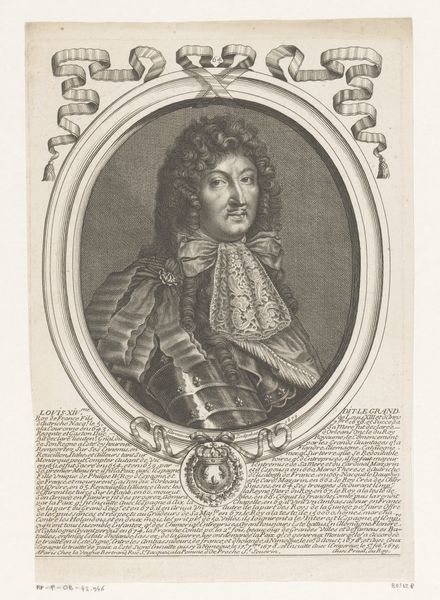
engraving
#
baroque
#
old engraving style
#
history-painting
#
engraving
Dimensions: height 229 mm, width 158 mm
Copyright: Rijks Museum: Open Domain
Curator: This engraving from after 1678 presents us with a portrait of Édouard-François Colbert de Maulévrier. Nicolas de Larmessin I is credited with this work, currently held at the Rijksmuseum. Editor: The first thing that strikes me is the imposing feeling despite the delicate medium. The man’s face seems so determined, a seriousness captured within the ornate frame. Curator: Let’s contextualize that perceived intensity. The Colbert family were powerful figures in the court of Louis XIV. Understanding Édouard-François’s positionality within that patriarchal and political structure allows us to see his representation as carefully constructed. The armor, for example, isn't merely decorative. Editor: Indeed, the armor, contrasted against the soft curls of his wig, tells a tale of both power and status. But looking at the symbolic language – the ribbons adorning the oval frame, even the typeface of the text – speaks to something deeper. It seems deliberately fashioned to project authority, yet also hints at vulnerability, given how temporary all status is. Curator: That juxtaposition of power and precarity is central to the Baroque era. Consider the concept of memento mori that haunted this period, as a commentary on status and power, yet deeply rooted in a collective anxiousness related to class, wealth, and access. Editor: Yes, it's a potent reminder. The detail given to the family crest, placed prominently below, anchors this image within the narrative of lineage and legacy, almost as a personal brand mark of status and legacy for him as an individual and his family more broadly. It makes you wonder, what anxieties or concerns drove him to memorialize himself this way? Curator: Exactly. We can look at this not just as a portrait, but as a conscious construction of identity within the specific social and political landscape of his time. How power functions and is displayed becomes something of the story here. Editor: Reflecting on this, I find myself thinking about the layered symbols we've unpicked, turning this piece into a mirror reflecting more than just a face, reflecting his station and perhaps deeper motives. Curator: I agree. By recognizing how historical and cultural factors intersect, we gain richer insights not only into this engraving but also into broader societal dynamics of that period.
Comments
No comments
Be the first to comment and join the conversation on the ultimate creative platform.
